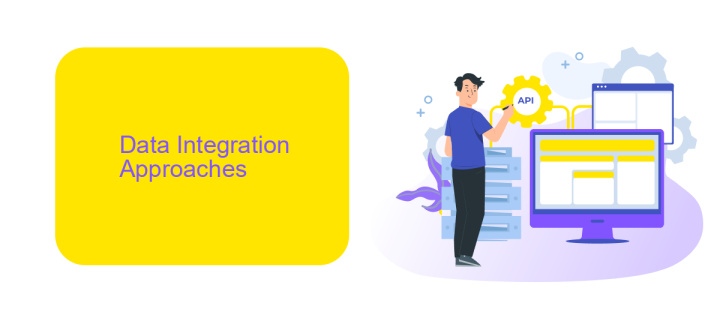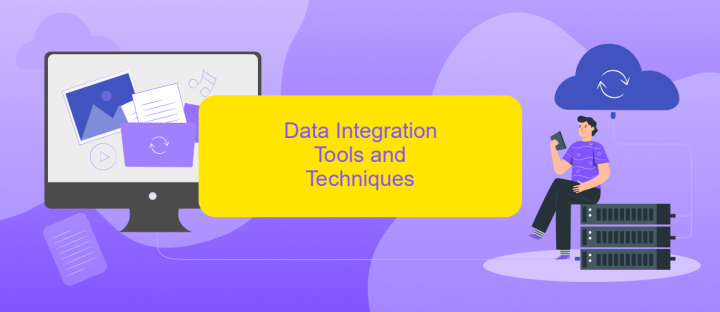Forms of Data Integration
Data integration is a crucial process in today's data-driven world, enabling organizations to combine data from various sources into a unified view. This article explores the different forms of data integration, highlighting their unique approaches and benefits. From ETL (Extract, Transform, Load) to real-time data integration, understanding these methods is essential for optimizing data management and enhancing decision-making processes.
Introduction and Overview
Data integration is a critical process in modern businesses, enabling seamless communication and data flow across various systems and applications. It involves combining data from different sources to provide a unified view that can enhance decision-making and operational efficiency.
- ETL (Extract, Transform, Load): This traditional method involves extracting data from various sources, transforming it into a consistent format, and loading it into a data warehouse.
- Data Virtualization: This approach allows users to access and query data without needing to know its physical location or format.
- API Integration: APIs facilitate real-time data exchange between systems, making it easier to automate workflows and improve data accuracy.
- Manual Integration: Involves human intervention to collect, clean, and integrate data, often used when automation is not feasible.
Services like ApiX-Drive simplify the integration process by offering pre-built connectors and automation tools. These platforms allow businesses to integrate various applications and data sources with minimal coding, ensuring that data flows smoothly and accurately across the organization. As data volumes and complexity grow, effective data integration becomes increasingly vital for maintaining competitive advantage and operational excellence.
Data Integration Approaches

Data integration approaches vary widely, depending on the specific needs and infrastructure of an organization. One common method is manual data integration, where data from different sources is manually collected, cleaned, and consolidated. This approach, while straightforward, is often time-consuming and prone to errors. Another method is using middleware, which acts as a bridge between different systems, enabling data to flow seamlessly between them. Middleware solutions can automate data transfer and transformation, reducing manual effort and increasing accuracy.
Cloud-based integration platforms, such as ApiX-Drive, offer another robust solution. These platforms provide pre-built connectors and templates to integrate various applications and services without extensive coding. ApiX-Drive, for instance, allows users to set up automated workflows that sync data across multiple platforms in real-time. This not only saves time but also ensures data consistency and reliability. By leveraging such tools, organizations can streamline their data integration processes, making them more efficient and scalable.
Data Integration Tools and Techniques

Data integration tools and techniques are essential for combining data from various sources into a unified view. These tools help organizations streamline their data management processes, ensuring that information is consistent, accurate, and accessible.
- ETL (Extract, Transform, Load) Tools: These tools, such as Apache NiFi and Talend, extract data from multiple sources, transform it into a suitable format, and load it into a data warehouse or other storage systems.
- Data Integration Platforms: Comprehensive platforms like ApiX-Drive facilitate seamless data integration by connecting various applications and automating workflows without the need for extensive coding.
- API Management Tools: Tools like Apigee and Postman help manage and integrate data through APIs, enabling real-time data exchange between systems.
- Data Virtualization: This technique allows users to access and query data without needing to know its physical location, using tools like Denodo and Red Hat JBoss Data Virtualization.
Choosing the right data integration tools and techniques depends on the specific needs and infrastructure of an organization. Tools like ApiX-Drive offer user-friendly interfaces and robust automation capabilities, making them ideal for businesses looking to enhance their data integration processes efficiently.
Challenges and Best Practices

Data integration presents several challenges, including data inconsistency, security concerns, and the complexity of integrating diverse data sources. Ensuring data quality and consistency across various systems can be a daunting task, often requiring significant time and resources.
Security is another critical issue, as integrated systems can become vulnerable to breaches if not properly secured. Additionally, the sheer variety of data formats and sources adds layers of complexity, making it difficult to achieve seamless integration.
- Ensure data consistency by implementing robust data validation processes.
- Enhance security measures to protect integrated data from unauthorized access.
- Utilize integration platforms like ApiX-Drive to simplify and automate the integration process.
- Regularly monitor and update integration workflows to adapt to changing requirements.
By following these best practices, organizations can overcome the common challenges of data integration. Tools like ApiX-Drive can significantly streamline the process, offering automated solutions that reduce manual effort and improve overall efficiency. Regular monitoring and updates are essential to maintaining the effectiveness and security of integrated systems.
- Automate the work of an online store or landing
- Empower through integration
- Don't spend money on programmers and integrators
- Save time by automating routine tasks
Conclusion and Future Trends
The exploration of various forms of data integration highlights the critical role they play in modern business operations. From ETL processes to real-time data streaming, each method offers unique advantages tailored to specific organizational needs. As businesses continue to generate vast amounts of data, the demand for seamless integration solutions will only grow. Tools like ApiX-Drive are instrumental in this landscape, providing user-friendly interfaces and robust functionalities to streamline data integration processes without extensive coding knowledge.
Looking ahead, the future of data integration will likely be shaped by advancements in artificial intelligence and machine learning. These technologies promise to enhance the efficiency and accuracy of data integration tasks, enabling predictive analytics and automated decision-making. Additionally, the rise of cloud-based integration platforms will offer more scalable and flexible solutions, accommodating the dynamic needs of modern enterprises. Staying abreast of these trends will be crucial for businesses aiming to leverage data as a strategic asset.
FAQ
What are the main forms of data integration?
How does ETL (Extract, Transform, Load) work?
What is data virtualization?
Can data integration be automated?
Why is data integration important for businesses?
Routine tasks take a lot of time from employees? Do they burn out, do not have enough working day for the main duties and important things? Do you understand that the only way out of this situation in modern realities is automation? Try Apix-Drive for free and make sure that the online connector in 5 minutes of setting up integration will remove a significant part of the routine from your life and free up time for you and your employees.


